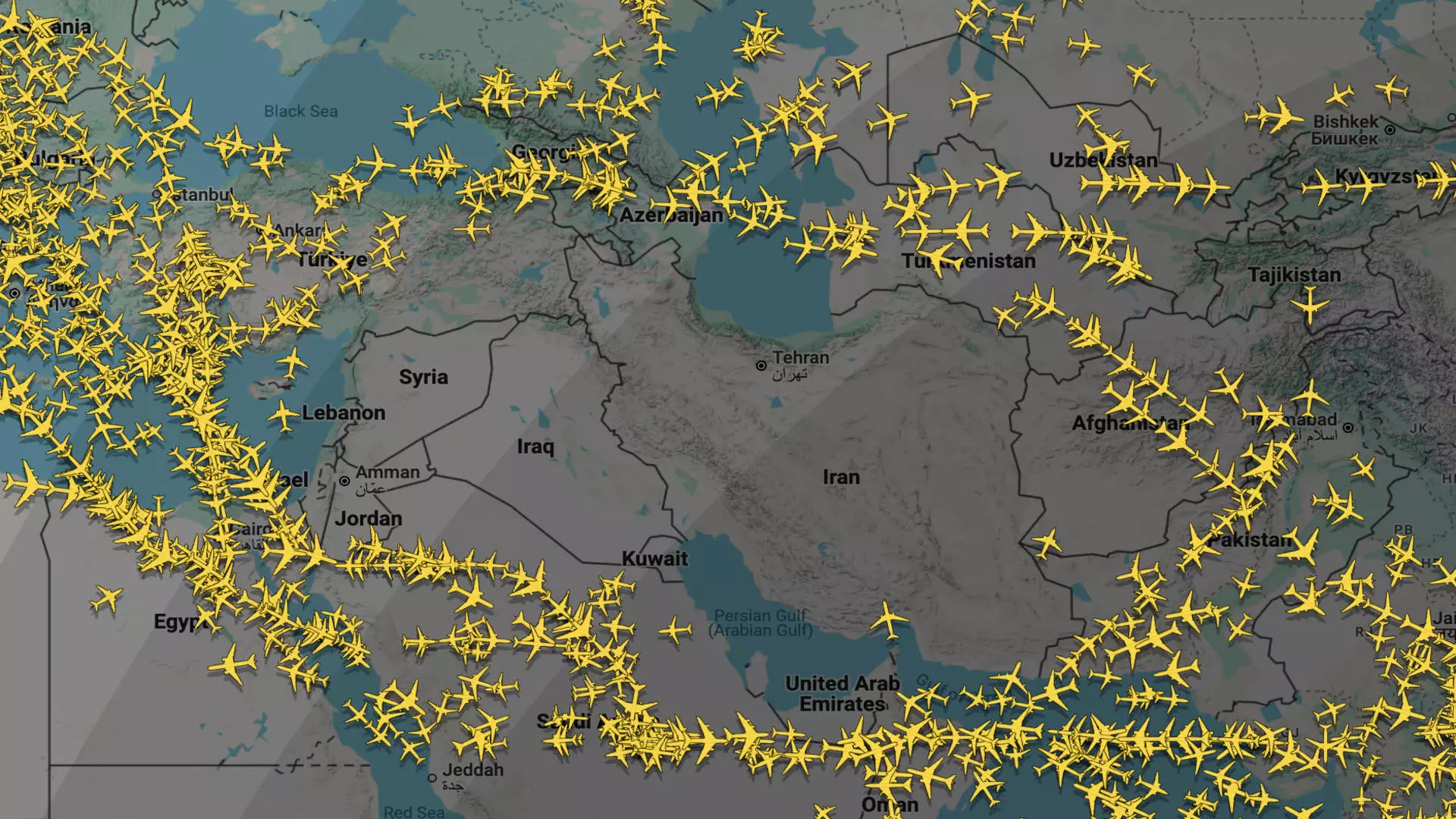The airspace over the Middle East faces unprecedented challenges as geopolitical tensions escalate. Following a missile strike by Iranian forces on a U.S. military base in Qatar, the aviation industry has reacted swiftly. Reports indicate that over 20 flights bound for Doha were rerouted, and additional flights destined for Dubai were likewise turned around. This development has shaken travelers and those within the airline industry, forcing them to confront not just interruptions but fundamental questions about safety and operational viability.
Air traffic monitors like Cirium detailed significant disruptions, highlighting how airlines were compelled to pivot in a heartbeat as safety concerns surged. Meanwhile, platforms such as Flightradar24 confirmed that airspace in the UAE was temporarily closed, further complicating an already complex operational landscape. The ripple effects of those developments can be felt worldwide, as the United Kingdom’s British Airways announced cancellations for flights to Doha through mid-week, underscoring the serious nature of the evolving security situation.
International Airlines Reassess Middle East Strategies
The instability has prompted leading international carriers surrounding the conflict to stymie or halt service altogether. Notable airlines including Air France, Iberia, and Finnair joined the ranks of carriers like American Airlines and United Airlines, who had previously paused their operations to the region. The recent events illustrate a cyclical pattern; as hostilities escalate, airlines are faced with the unenviable task of weighing their operational costs against the safety of their crews and passengers.
The Saudi Arabian airspace is similarly affected, and the island nation of Bahrain has been compelled to close its airspace, signaling a regional consensus on the growing threat. Airlines are not only grappling with the immediate threat posed by potential hostilities but also adapting to the cumbersome logistics of longer flight routes—an inevitable consequence that leads to increased fuel costs and operational challenges.
Impact on Global Aviation and the Cost of Safety
In light of dual conflicts—both in the Middle East and the ongoing war in Ukraine—airlines are maneuvering through a maze of unpredictability. The intersection of these crises has birthed an aviation environment marked by costly adjustments. Not only do longer routes strain resources, but they also hinder the feasibility of maintaining a robust schedule. Travelers can expect delays and increased ticket prices as airlines grapple with their new realities.
However, within this turbulent backdrop lies an essential truth: safety must always take precedence over profit. The cautious approach being adopted by airlines reflects a deep-rooted commitment to ensure the welfare of passengers and aircrew. This re-evaluation may signal a longer-term transformation in the global aviation industry, where risk assessment plays a central role in operational planning.
As the conflict in the Middle East evolves, the ripple effects will likely continue to shape air travel. The challenges at hand afford us a clearer perspective on the vital balance between maintaining profitability in a competitive industry and safeguarding human lives, a balancing act that will undeniably influence operational strategies moving forward.


Leave a Reply